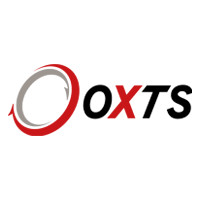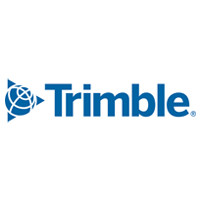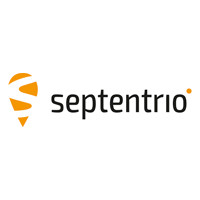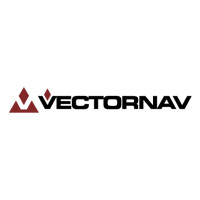GNSS Smart Antennas
Let us solve GNSS System Engineering issues while You focus on your application
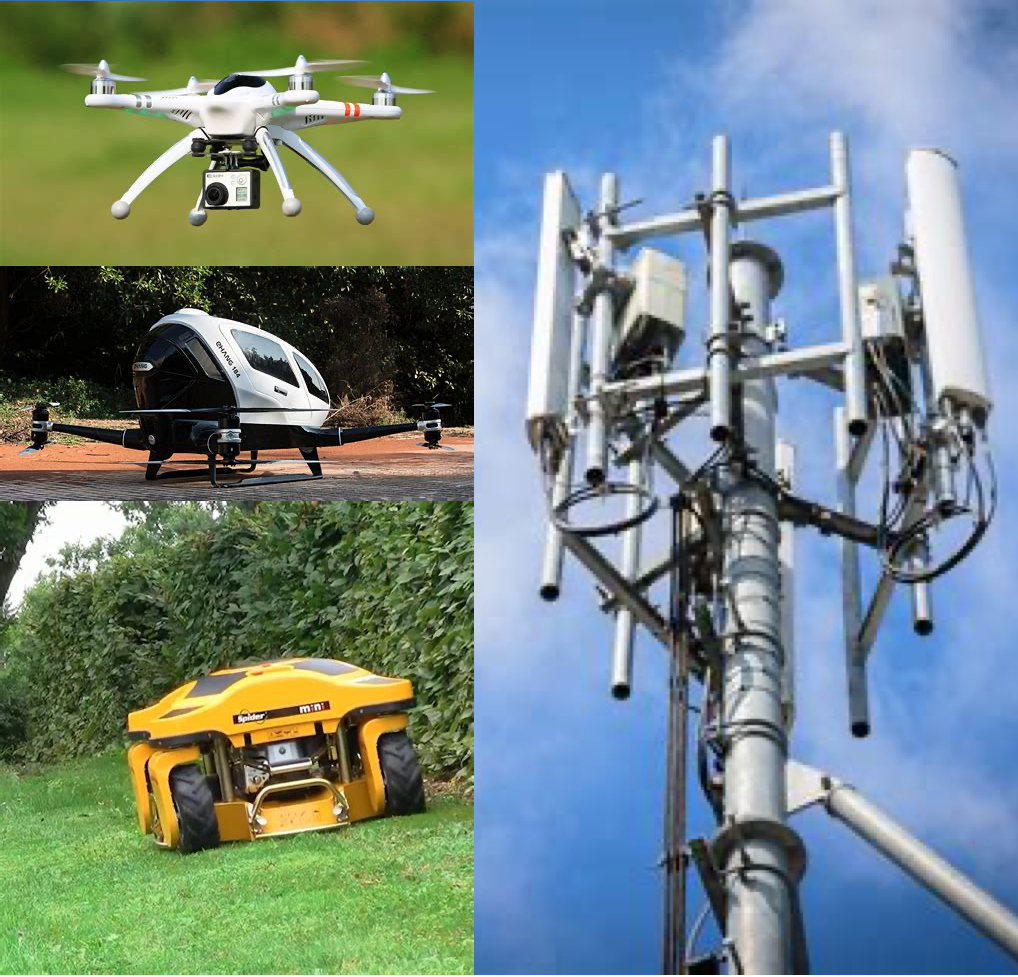
Tallysman’s High accuracy, integrated Smart GNSS Antennas combine Tallysman’s high-performance antenna technology with high end GNSS receivers … and more!
Multi-Constellation, Multiple Frequency, interference mitigation … we take care the “table stakes” AND the system RF design considerations that can undermine your solution’s GNSS performance, so you can focus on your unique value proposition.
Tallysman’s Smart GNSS Antennas don’t stop at basic positioning. You can focus on timing or location, select your system interface and mechanicals (Radome, mounting style), add inertial management units for deep urban canyon operation … there is a wide array of options. With our Augmented solutions, which integrate with Augmentation Services like U-Blox PointPerfect® or give you RTK Rover/Base configurations that enable precision heading, you can elevate accuracy to meet the demanding requirements of automated systems and 5G networks.
With our 33-TP5390SDK-0 Software Development Kit Tallysman gives you the tools to manage these products, including configurator downloads, Manuals, our full TruPrecision application and a 60 day subscription to u-blox’ PointPerfect Augmentation Service for managing Augmented Solutions
Tallysman offers a range of reliable, acccurate Smart GNSS Timing receiver/antennas for applications including communication systems, electrical power grids and financial networks. The TW5000 series Timing receiver/antennas are designed to meet the strictest timing synchronization requirements in 5G mobile networks. The multi-band capability reduces the timing error under clear skies to less than 5 ns without the need for an external GNSS correction service.
The TW5000 series Tracking receiver/antennas are designed to deliver superior geo-positioning performance, with multi-constellation, dual feed capability and industry leading multi-path rejection. For use with any telematics or inertial system, connected via RS-232 or RS-422.
Tallysman’s Augmented Smart Antenna/Receivers utilize Multi-Constellation/Full Band Accutenna Dual Feed patches, combined with PPP-RTK augmentation services (IP Network delivered, L-Band or both) or RTK in Base/Rover configurations to deliver <20 cm accuracy (PPP-RTK) (with <40 second convergence) or <10 cm accuracy (RTK Base/Rover).
In Base/Rover configuration, Tallysman’s Augmented Smart Antennas can deliver high precision heading.
For automated driving, drones and other applications that require high precision.
Note. These antennas also have excellent performance without augmentation, due to their Multi-Band antennas.
TIMING
& GEOLOCATION
TW5350/51 (RS-232)
The TW5350 is a multi-constellation GNSS Smart Antenna which provides simultaneous GPS/GLONASS/SBAS reception. It is designed for use in professional grade applications such as precision timing, network synchronization, low current applications, and tracking/positioning applications.
The TW5350 GNSS Smart Antenna uses the state-of-the- art multi-constellation GNSS receiver which provides 72 high sensitivity tracking channels which can be configured to acquire and track 3 concurrent GNSS constellations (GPS, Galileo, GLONASS and Beidou) plus SBAS (WAAS, EGNOS, MSAS and GAGAN) and QZSS augmentation signals simultaneously. Differential GPS corrections may also be supplied via RTCM formatted corrrections messages.
The TW5350 employs Tallysman’s AccutennaTM dual feed antenna patch technology which greatly improves rejection of multi-path signal interference, across the whole GNSS band, making the TW5350 the most precise smart antenna in its size across all operating environments.
Features
- Multi-Constellation Receiver/Antenna
- Concurrent tracking of 3 constellations
- 72 Channel simultaneous operation
- High performance tracking (-164 dBm)
- WAAS, EGNOS,MSAS & GAGAN + QZSS
- DGPS corrections using RTCM input
- Navigation rates 1 to 5 Hz
- 1 PPS RS422 outputs
- Low Current Standby Mode
- Accutenna™ Technology
- Pre- and Post LNA filtering
- Superior multi-path signal rejection
- Industrial grade IP69K enclosure
- RoHS, REACH and RED Compliant CE Marking
TW5354 (RS-485 timing)
The TW5354 is a multi-constellation GNSS Receiver which provides simultaneous GPS/GLONASS + SBAS reception. It is designed for use in industrial and infrastructure grade digital tracking/ positioning and timing applications.
The TW5354 employs Tallysman’s Accutenna™ dual feed antenna patch technology which greatly improves rejection of multi-path signal interference, across the whole GNSS band. The addition of pre- and post- filtering within the RF signal chain greatly improves immunity to jamming carriers typical within urban environments.
Features
- Multi-constellation receiver/Antenna
- Concurrent tracking of 3 constellations
- 72 Channel simultaneous operation
- High-performance tracking (-164 dBm)
- WAAS, EGNOS,MSAS & GAGAN + QZSS
- DGPS corrections using RTCM input
- Navigation rates 1 to 5 Hz
TW5382 - High Accuracy Timing
The TW5382 is a multi-band, multi-constellation integrated GNSS receiver/antenna designed specifically to meet the strictest timing synchronization requirements in 5G mobile networks.
The state of the art GNSS receiver supports concurrent tracking of all four major constellations in multiple frequency bands. The multi-band capability reduces timing errors under clear skies to less than 5ns without the need for an external GNSS correction service.
The integrated dual feed Accutenna™ greatly improves the rejection of multi-path signal interference.
The TW5382 offers an optional master and slave configuration that features a differential timing mode that exchanges correction data with a neighboring TW5382 timing receiver via a RS-485 communication link. Under optimal conditions the timing accuracy can be further improved to less than 2.5ns.
Features
- Improved noise immunity with multi-band GNSS receiver
- Improved multi-path rejection with Dual feed Accutenna™
- Multi-band GNSS receiver is unaffected by ionospheric errors
- High reliability timing with expansive constellation array
- Exceptional timing performance without correction services
- T-RAIM to support the highest level of timing integrity
- Broad 5V-36V operation
- RS-485 differential signalling
- Industrial grade IP67 enclosure
- Rugged fixed mount
- Multipe cable lengths (5m, 15m, 25m)
- Available with conical radome
GEOLOCATION
TW5252 (Magnetic Mount)
The TW5252 is a multi-constellation GNSS Receiver which provides simultaneous GPS/GLONASS + SBAS reception. It is designed for use in professional grade digital tracking/ positioning applications.
The TW5252 employs Tallysman’s Accutenna™ dual feed antenna patch technology which greatly improves rejection of multi-path signal interference, across the whole GNSS band. The addition of pre- and post- filtering within the RF signal chain greatly improves immunity to jamming carriers typical within urban environments.
Features
- Multi-constellation receiver/Antenna
- Concurrent tracking of 3 constellations
- 72 Channel simultaneous operation
- High-performance tracking (-164 dBm)
- WAAS, EGNOS,MSAS & GAGAN + QZSS
- DGPS corrections using RTCM input
- Navigation rates 1 to 5 Hz
- Conditioned ignition input for Tait Radios
- 5V to 36V automotive operation
- AccutennaTM Technology
- Pre- and Post- LNA filtering
- Superior multi-path signal rejection
- Industrial grade IP69k enclosure
- RoHS, REACH, RED-compliant CE marking
TW5352 (Fixed Mount)
The TW5352 is a multi-constellation GNSS Receiver which provides simultaneous GPS/GLONASS + SBAS reception. It is designed for use in professional grade digital tracking/ positioning applications.
The TW5352 employs Tallysman’s Accutenna™ dual feed antenna patch technology which greatly improves rejection of multi-path signal interference, across the whole GNSS band. The addition of pre- and post- filtering within the RF signal chain greatly improves immunity to jamming carriers typical within urban environments.
Features
- Multi-constellation receiver/Antenna
- Concurrent tracking of 3 constellations
- 72 Channel simultaneous operation
- High-performance tracking (-164 dBm)
- WAAS, EGNOS,MSAS & GAGAN + QZSS
- DGPS corrections using RTCM input
- Navigation rates 1 to 5 Hz
- Conditioned ignition input for Tait Radios
- 5V to 36V automotive operation
- AccutennaTM Technology
- Pre- and Post- LNA filtering
- Superior multi-path signal rejection
- Industrial grade IP69K enclosure
- RoHS, REACH, RED-compliant CE marking
TW5262 with UDR (Magnetic)
The TW5262 is a multi-constellation GNSS Receiver/Antenna fused with inertial sensor data. It is an easy-to-use tracking solution that enables high-performance positioning in places where GNSS signals are poor or not available.
The TW5262 incorporates a latest-generation GNSS receiver that supports simultaneous GPS/GLONASS/Galileo reception and a Tallysman’s Accutenna™ patch antenna. This dual-feed antenna greatly improves rejection of multipath signal interference, making it the most precise antenna for tracking in dense urban environments.
Features
- Complete positioning solution with integrated 3D sensors
- Positioning accuracy in dense cities and covered areas
- Independent of any sensor connection to the car
- 5V-36V automotive operation
- Excellent multi-path signal rejection
- Industrial grade IP67 enclosure
- RoHS, REACH, RED compliant / CE marking
TW5362 with UDR (Fixed Mount)
The TW5362 is a multi-constellation GNSS Receiver/Antenna fused with inertial sensor data. It is an easy-to-use tracking solution that enables high-performance positioning in places where GNSS signals are poor or not available.
The TW5362 incorporates a latest-generation GNSS receiver that supports simultaneous GPS/GLONASS/Galileo reception and a Tallysman’s Accutenna™ patch antenna. This dual-feed antenna greatly improves rejection of multipath signal interference, making it the most precise antenna for tracking in dense urban environments.
Features
- Complete positioning solution with integrated 3D sensors
- Positioning accuracy in dense cities and covered areas
- Independent of any sensor connection to the car
- 5V-36V automotive operation
- Excellent multi-path signal rejection
- Industrial grade IP67 enclosure
- RoHS, REACH, RED compliant / CE marking
TW5365 with UDR (RS-485, Fixed Mount)
The TW5365 is a multi-constellation GNSS Receiver/Antenna fused with inertial sensor data. It is an easy-to-use tracking solution that enables high-performance positioning in places where GNSS signals are poor or not available.
The TW5365 incorporates a latest-generation GNSS receiver that supports simultaneous GPS/GLONASS/Galileo reception and a Tallysman’s Accutenna™ patch antenna. This dual-feed antenna greatly improves rejection of multipath signal interference, making it the most precise antenna for tracking in dense urban environments.
Features
- Complete positioning solution with integrated 3D sensors
- Positioning accuracy in dense cities and covered areas
- Independent of any sensor connection to the car
- 5V-36V automotive operation
- Excellent multi-path signal rejection
- RS422/485 Differential Signalling
- Industrial grade IP67 enclosure
- RoHS, REACH, RED compliant / CE marking
AUGMENTATION
& Multi-Band
TW5384 (IP-Network)
The TW5384 is a multi-band (L1/L2), multi-constellation integrated GNSS receiver/antenna with RTK for Precise Point Positioning. The TW5384 is capable of providing sub 1 meter accuracy stand alone and sub 10 cm accuracy with RTK corections to support the most demanding positioning applications.
Designed to meet the most demanding of positioning applications, the receiver offers support for a broad range of corrections services (RTK base/rover or network) allowing performance optimization according to each application’s unique requirements. The concurrent multi-band (L1/L2) access to all four satellite constellations improves the receiver’s convergence capability to deliver a quick, precise and reliable position solution which is unaffected by ionospheric errors, and improved resilience to jamming.
Features
- Improved noise immunity with multi-band GNSS receiver
- Improved multi-path rejection with Dual feed Accutenna™
- Multi-band GNSS receiver is unaffected by ionospheric errors
- High-reliability timing with expansive constellation array
- Exceptional position performance without correction services
- Broad 5V-36V operation
- RS-485 differential signalling
- Industrial grade IP69K enclosure
- Rugged fixed mount
- Multiple cable lengths (5m, 15m and 25m)
- Available with conical radome
TW5386 (IP-Network, IMU)
The TW5386 is a multi-band (L1/L2), multi-constellation integrated GNSS receiver/antenna with Inertial Measurement Unit (Untethered Dead Reckoning) and RTK for Precise Point Positioning. The TW5386 is capable of providing sub 1 meter accuracy stand alone and sub 10 cm accuracy with RTK corrections to support the most demanding positioning applications in the most challenging environments such as a dense urban canyon.
The TW5386 offers support for a broad range of corrections services (RTK base/rover or network) allowing performance optimization according to each application’s unique requirements. The concurrent multi-band (L1/L2) access to all four satellite constellations improves the receiver’s convergence capability to deliver a quick, precise and reliable position solution which is unaffected by ionospheric errors, and improved resilience to jamming.
Features
- Improved noise immunity with multi-band GNSS receiver
- Improved multi-path rejection with Dual feed Accutenna™
- Multi-band GNSS receiver is unaffected by ionospheric errors
- High reliability timing with expansive constellation array
- IMU provides continuous availability during perios of signal loss
- Exceptional position performance without correction services
- Broad 5V-36V operation
- RS-485 differential signalling
- Industrial grade IP69K enclosure
- Rugged fixed mount
- Multiple cable lengths (5m, 15m and 25m)
- Available with conical radome
TW5390 (IP Network, IMU, L-Band)
The TW5390 is a multi-band (L1/L2), multi-constellation integrated GNSS receiver/antenna with Inertial Measurement Unit (Untethered Dead Reckoning), and integrated L-Band corrections receiver for stand-alone RTK for Precise Point Positioning. The TW5390 is capable of providing sub 10 cm accuracy to support the most demanding navigation, automation and precision agriculture applications. .
The TW5390 incorporates a latest generation multi-band (L1/L2) GNSS receiver with a Tallysman Accutenna™ multi-band (L1/L2) dual feed patch. The state of the art GNSS receiver supports concurrent tracking of all four major constellations (GPS, BeiDou, Galileo and GLONASS) in multiple frequency bands, offering high availabilty for RTK solutions with a quick convergence time.
Features
- Integrated L-Band corrections receiver for exceptional precision
- Improved noise immunity with multi-band GNSS receiver
- Improved multi-path rejection with Dual feed Accutenna™
- Multi-band GNSS receiver is unaffected by ionospheric errors
- High reliability timing with expansive constellation array
- IMU for UDR provides continuous availability during periods of signal loss
- Broad 5V operation
- RS-485 differential signalling
- Industrial grade IP69K enclosure
- Rugged fixed mount
- Multiple cable lengths (5m, 15m and 25m)
- Available with conical radome
TW5390C (IP Network, IMU, CLAS)
The TW5390C is a multi-band (L1/L2/L6), multi-constellation GNSS receiver/antenna with Inertial Measurment Unit (Dead Reckoning) with integrated QZSS Centimeter Level Augmentation Service (CLAS) L6 receiver for Subscription-Free stand alone RTK Precise Point Positioning. The TW5390C is capable of providing cm level accuracy to support the most demanding navigation, automation and precision agriculture applications.
The TW5390C incorporates a latest generation multi-band (L1/ L2) GNSS receiver with a Tallysman Accutenna™ (L1/L2/L6) dual-feed patch. The state of the art GNSS receiver supports concurrent tracking of all four major constellations (GPS, BeiDou, Galileo and GLONASS ) in multiple frequency bands, offering high availability for RTK solutions with a quick convergence time. The multi-band architecture is the most effective method for the removal of ionospheric error. The TW5390C employs multi-stage filtering with low noise figure LNAs, combined with the dual feed Accutenna™, which greatly improves the rejection of multi-path signal interference. The IMU Sensor Fusion further mitigates effects of severe multi-path reflections and provides continuous position availability during periods of GNSS outages caused by signal obstruction, offering exceptional performance to meet the most challenging precise positioning applications.
The TW5390C incorporates an L-Band correction receiver which offers cm level accuracy through real-time PPP-RTK corrections via the over-the air QZSS CLAS service. (Unlike traditional RTK, no base station is required.) The integrated CLAS receiver offers quick convergence and continuous corrections for Japan geographic regions with and without IP/Network coverage. The TW5390C may also be configured to output QZSS MADOCA messages as a stand alone QZSS L6E message receiver. The TW5390C may also be configured to operate in a traditional RTK mode as rover offering sub cm precision.
Features
- Integrated CLAS corrections receiver for exceptional precision
- Improved noise immunity with multi-band GNSS receiver
- Improved multi-path rejection with Dual feed Accutenna™
- Multi-band GNSS receiver is less affected by ionospheric errors
- High position reliability with expansive constellation array
- High position availability in urban environment with Dead Reckoning
- 5V operation
- RS-485 differential signalling
- Industrial grade IP69K enclosure
- Rugged fixed mount
- Multiple cable lengths (5m, 15m and 25m)
- Available with conical radome
TW5790 (IP Network, IMU, L-Band, Magnetic Mount, USB)
The TW5790 is a multi-band (L1/L2), multi-constellation integrated GNSS receiver/antenna with Inertial Measurment Unit (Untethered Dead Reckoning) and integrated L-Band corrections receiver for stand alone RTK for Precise Point Positioning. The TW5790 is capable of providing sub 6 cm accuracy to support the most demanding navigation, automation and precision agriculture applications.
The TW5790 incorporates a latest generation multi-band (L1/ L2) GNSS receiver with a Tallysman Accutenna™ multi-band (L1/ L2) dual feed patch. The state of the art GNSS receiver supports concurrent tracking of all four major constellations (GPS, BeiDou, Galileo and GLONASS ) in multiple frequency bands, offering high availability for RTK solutions with a quick convergence time. The multi-band (L1/L2) architecture is the most effective method for the removal of ionospheric error. The TW5790 employs multi-stage filtering with low noise figure LNAs, combined with the dual feed Accutenna™, which greatly improves the rejection of multi-path signal interference. The IMU Sensor Fusion further mitigates effects of severe multi-path reflections and provides continuous position availability during periods of GNSS outages caused by signal obstruction offering exceptional performance to meet the most challenging precise positioning applications.
The TW5790 incorporates an L-Band correction receiver which offers sub 6 cm accuracy through real-time PPP-RTK corrections via the Point Perfect subscription service. (No RTK base station is required, typical of traditional RTK applications.) The L-Band receiver offers quick convergence and continuous corrections for North America and Europe for geographic regions without IP/Network coverage. Point Perfect streaming corrections are available in continental US, Canada, Europe, South Korea and Australia. The TW5790 may also be configured to operate in an RTK mode as a rover offering sub cm precision.
Features
- Integrated L-Band corrections receiver for exceptional precision
- Improved noise immunity with multi-band GNSS receiver
- Improved multi-path rejection with Dual feed Accutenna™
- Multi-band GNSS receiver is unaffected by ionospheric errors
- High reliability timing with expansive constellation array
- High position availability in urban environemnt with UDR
- 5V operation
- USB 2.0 signalling
- Industrial grade IP67 enclosure
- Rugged magnetic mount
- 5M cable lengths with USB Type A male
- L1/L5 option available
Smart Antenna/Receivers At a Glance
Standard Precision
Model
Notes
Description
33-5252-7-yy-zz
33-5262-7-yy-zz
Mount
Typical Application
Voltage
Over-Voltage
L1
L2
L5
L-Band
CLAS
Active Filtering
Con Const
SBAS
Chan
Tx/Rx Signalling
1PPS Signalling
Rating
Ordering Format 33-5***-x-yy-zz-PCO
x = Voltage: x = 7 : 5 – 36V; 9 : 5V | yy = Radome: yy = 00 : grey conical; 01 : white conical; 10 : grey low profile; 11 : white low profile | zz = length in meters: zz=05 Standard 5 meters; 15m, 25m special order | PCO – default factory programming
33-5350-7-yy-zz
33-5362-7-yy-zz
33-5365-7-yy-zz
√
Ordering Format 33-5***-x-yy-zz
x = Voltage: x = 7 : 5 – 36V; 9 : 5V | yy = Radome: yy = 00 : grey conical; 01 : white conical; 10 : grey low profile; 11 : white low profile | zz = length in meters: zz=05 Standard 5 meters; 15m, 25m special order | PCO – default factory programming
Precise with RTK Augmentation Support
Model
Notes
Description
33-5390-09-yy-zz
33-5394-09-yy-zz
Mount
Typical Application
Voltage
Over-Voltage
L1
L2
L5
L-Band
CLAS
opt
Active Filtering
Con Const
SBAS
Chan
Tx/Rx Signalling
1PPS Signalling
Rating
Ordering Format: 33-5***-vx-yy-zz
v = Interface: v= 0 : RS422/485; 1 : USB; 2 : RS232; 3 : USB, BLE, WIFI | x = Voltage: x = 7 : 5 – 36V; 9 : 5V | yy = Radome: yy = 00 : grey conical; 01 : white conical; 10 : grey low profile; 11 : white low profile | zz = length in meters: zz=05 Standard 5 meters; 15m, 25m special order | PCO – default factory programming
opt
Format: 33-5***-vx-yy-zz
v = Interface: v= 0 : RS422/485; 1 : USB; 2 : RS232; 3 : USB, BLE, WIFI | x = Voltage: x = 7 : 5 – 36V; 9 : 5V | yy = Radome: yy = 00 : grey conical; 01 : white conical; 10 : grey low profile; 11 : white low profile | zz = length in meters: zz=05 Standard 5 meters; 15m, 25m special order | PCO – default factory programming
Available Product Options
Model
Notes
MOQ
Description
33-5390C-09-yy-zz
33-5790C-19-yy-zz
Mount
Typical Application
Voltage
Over-Voltage
opt
L1
L2
L5
L-Band
CLAS
Active Filtering
Con Const
SBAS
Chan
Tx/Rx Signalling
1PPS Signalling
Rating
Format: 33-5***-vx-yy-zz
v = Interface: v= 0 : RS422/485; 1 : USB; 2 : RS232; 3 : USB, BLE, WIFI | x = Voltage: x = 7 : 5 – 36V; 9 : 5V | yy = Radome: yy = 00 : grey conical; 01 : white conical; 10 : grey low profile; 11 : white low profile | zz = length in meters: zz=05 Standard 5 meters; 15m, 25m special order | PCO – default factory programming


We make it easy for you to try out our Ultra-Precise Augmentation Smart Antenna/Receivers AND the services they are designed to use.
Tallysman’s PPP and PPP-RTK capable Augmented Smart Antenna/Receivers utilize the u-blox F9x series of GNSS receivers, and the DSx series satellite based GNSS correction receivers. As a u-blox design partner, Tallysman and u-blox collaborate to ensure Tallysman Smart Antennas are designed and manufactured to the highest-standards. They are immediately usable out of the box with the excellent accuracy you can derive from non-augmentation, using a great antenna and receiver ( <50cm accuracy) (see GNSS Positioning Techniques), but there is so much more when using augmentation, and we help you get there with our Software Development Kits (SDK).
With our SDK, we make it easy to go further and test out PPP and PPP-RTK correction/augmentation performance. First, you can easily connect Tallysman Smart Antennas with RS-485 interfaces to a PC by using the USB converter included in the SDK and the TruPrecision application for easy configuration.
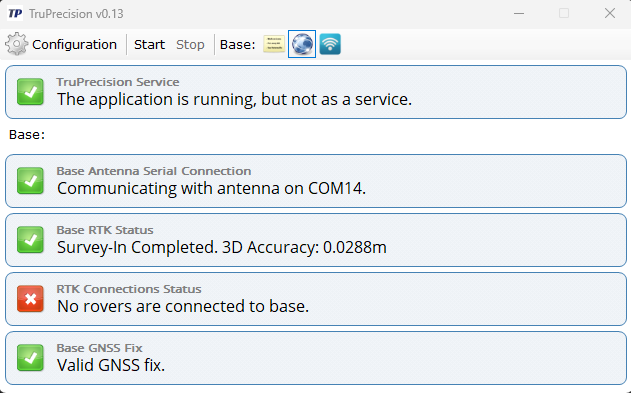
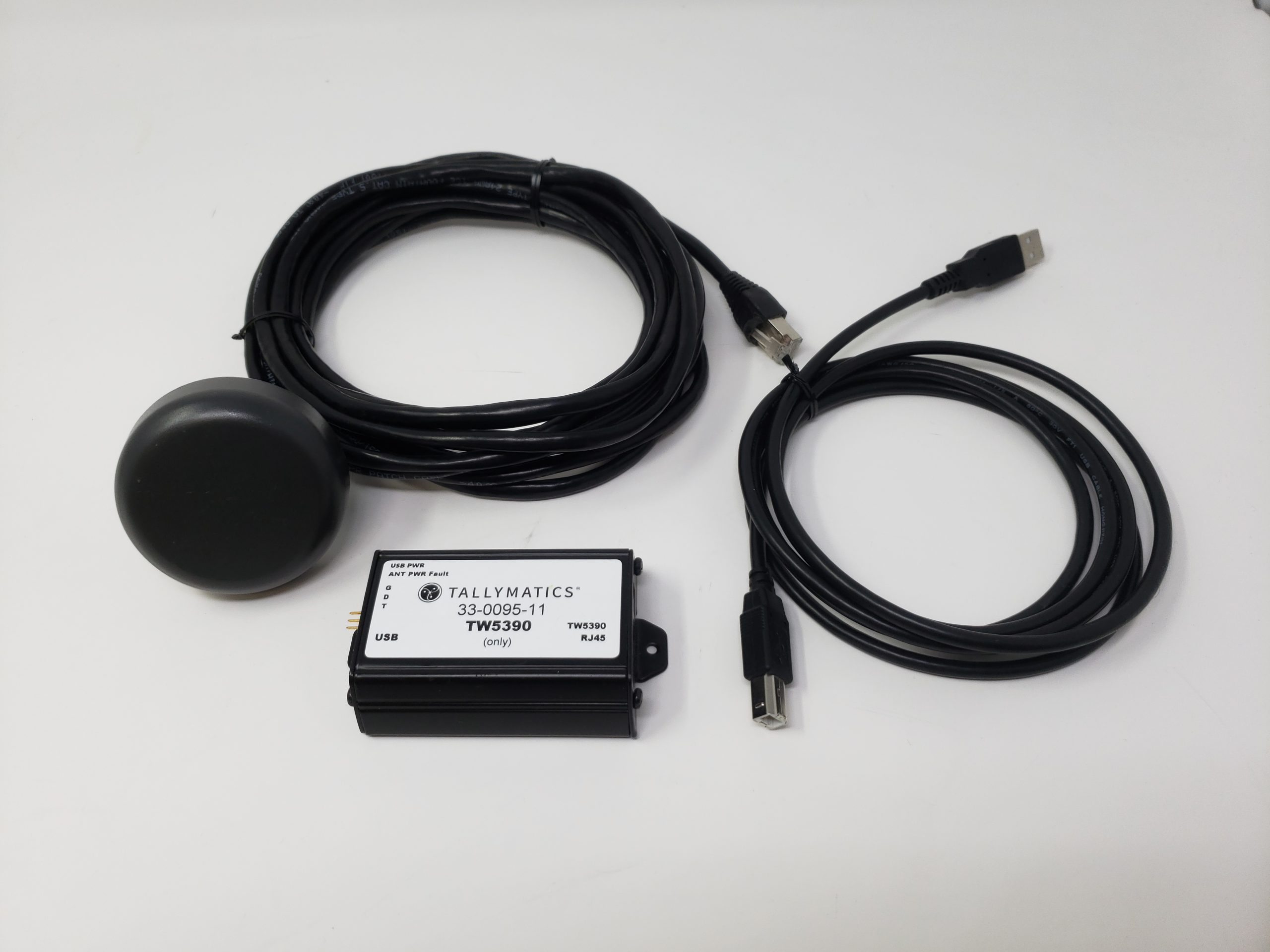
TruPrecision software makes it easy to test Base/Rover configuration (RTK) performance by providing easy to use configuration options such as Base Survey-In optimization parameters (accuracy vs. survey-in time objectives), and for non-adjacent Base/Rover pairs, instantly configurable internet-based channels for broadcasting RTCM connections from an SDK configured as a Base to multiple SDKs configured as Rovers. Next, Tallysman and u-blox collaboration allows PPP Augmentation to be easily tested, because with every SDK there is a 60 day free subscription to u-blox’ PointPerfect Augmentation Service.
The Quick-Start guide included in the kit shows you how to use the redemption code, load the encryption keys into TruPrecision, and start using PPP-RTK corrections.
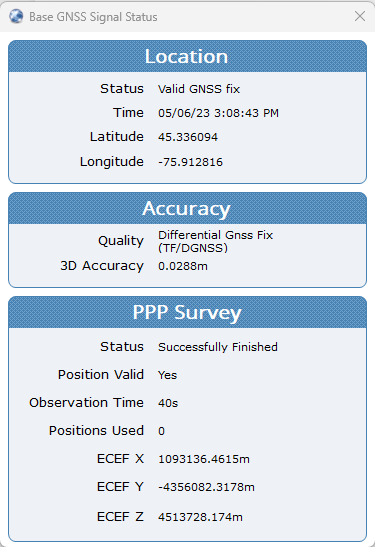
TruPrecision also gives you an extremely useful hybrid solution for taking advantage of RTK’s excellent accuracy (<1 cm) without the pain of the long Base Survey-In times by using PointPerfect to do a “Fast Survey-in” of the Base, then turn off the PPP-RTK correction service (PointPerfect) for the Base automatically once Surveyed-In. Historically Survey-In of a Base can take 24 hours. Fast Survey-in using PPP-RTK augmentation services (PointPerfect) can be <20 minutes or even better, depending on accuracy vs survey-in goals!
Finally … there is one more thing. Base/Rover RTK configurations allow for Precision Heading, which are extremely useful for autonomous operation. Once again, TruPrecision and the SDK make this easy to use and test.
To test PPP-RTK functionality (PointPerfect) over L-Band and IP-networks, the 33-TP5390SDK-0 is required. To test Base/Rover configurations and Precision Heading, then a 33-TP5384SDK-0 is needed for the Base. The Rover can be a 33-TP5384SDK-0 or a 33-TP5390SDK-0. Of course, if you don’t need the PC test set up, and you want to jump right into solution integration, you can just use the antennas – TW5384 for a base or rover, and TW5390 (IP-Network, IMU, L-Band, RS-485), or TW5790 (IP-Network, IMU, L-Band, Type A USB), or TW5390C (IP-Network, IMU, QZSS CLAS signalling over L6, RS-485) or TW5386 (IP-Network, IMU, RS-485) for Rovers. Colocated Base/Rover operation with dedicated RTCM Corrections port between antennas requires RS-232 interface version of TW5384/86.
TP5390SDK Unboxing
In this age of digital design, the connection between the GNSS antenna and GNSS receiver is a gaping exposure to systemic error that should not be trivialized. To get a full appreciation for the issues we highly recommend taking some timeout to enjoy the GNSS webinar (linked to the image at the left).
The job of a GNSS antenna is to present as clean a signal to the receiver as possible. The antenna cleans that up as best as it can (taking care of the big items, such as multi-path interference, satellite azimuth and elevation, in-band interference, phase-centre error etc.), but the path from the physical antenna element to the Receiver leaves a lot of room for further systemic errors into the signal reception, especially using the traditional approach of locating the antenna some distance from the receiver, exposed to local system impairments.
The shift to a carrier phase precise positioning solution with integrated L-Band augmentation imposes a new level of detail in GNSS system design.
Receiving and preserving the quality of the GNSS signal from the antenna element to the receiver is essential to persisting carrier phase lock, avoiding cycle slips, and maintaining convergence while operating in challenging environments.
As a low amplitude, easily impaired signal, the best way to do that is to design around a known (to the best of ability to know) physical and electrical set of parameters.
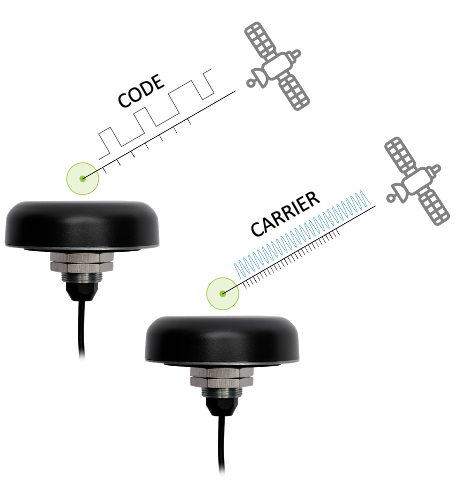
Simply put, reducing the window for fault injection by constraining the variables between analog GNSS signal and digital representation of the geo-location information, to a known set, is the optimal path. Tallysman does that by integrating our best antennas with the best commercial receivers in the native antenna mechanical package, presenting the GNSS receiver to the target system over a suitable “fit for purpose” interface, such as:
- RS422/485
- RS232
- USB2.0 Type A
- USB2.0 Type A, BLE, WiFi
- CANBus
- Automotive Ethernet 100BaseT1
What can you achieve? With the TW5390 Augmented Smart GNSS receiver, visualized in the graphic to the right that points out its major features, you can achieve the results detailed in the 5m radius scatter plots below. (TW5390 is the rightmost).
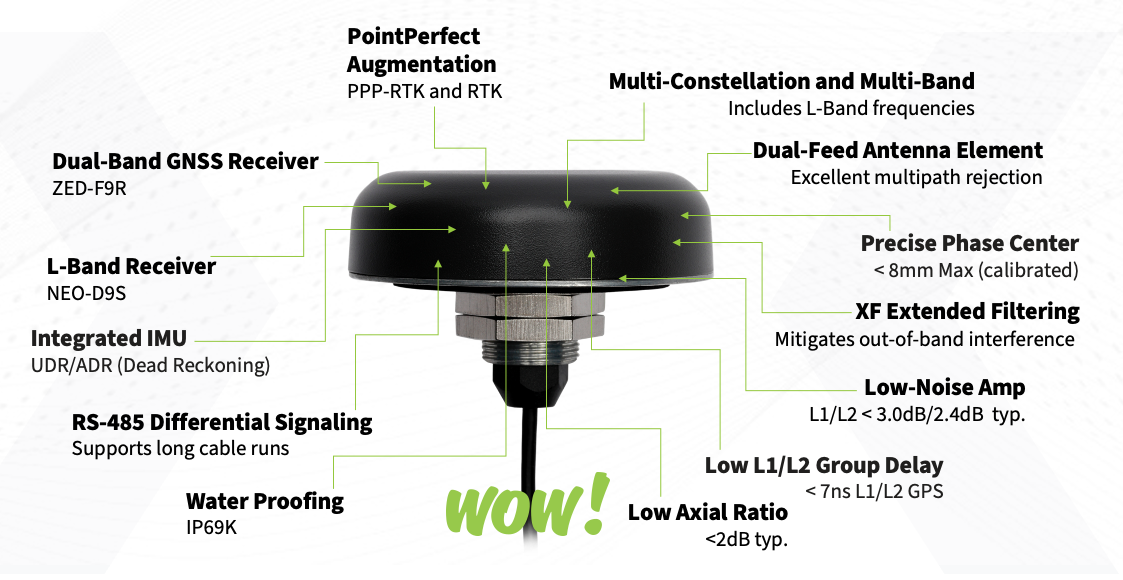
GNSS (L1)
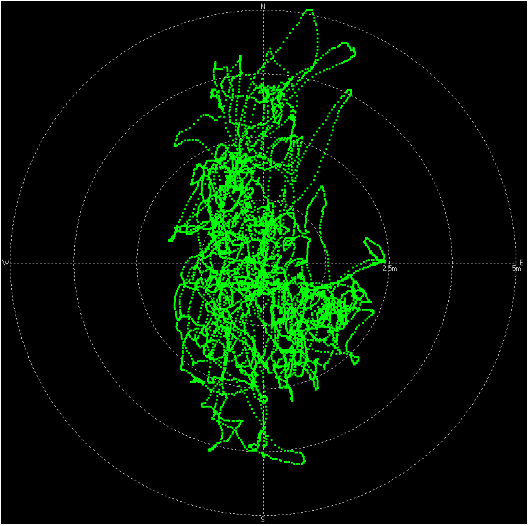
L1 (GPS/Gal/GLO)
GNSS (L1/L2)
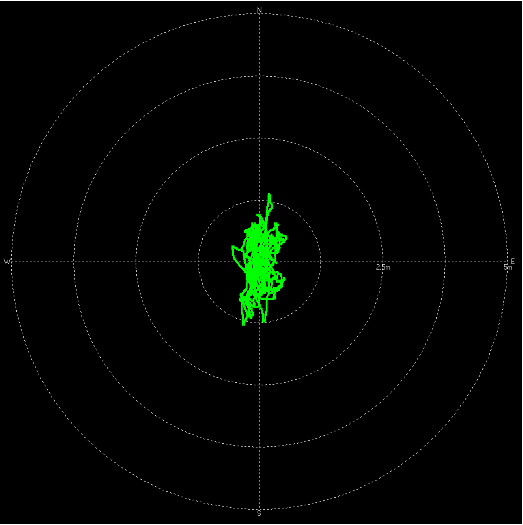
L1/L2 (GPS/Gal/GLO/BDS)
TW5390=GNSS (L1/L2)+PointPerfect
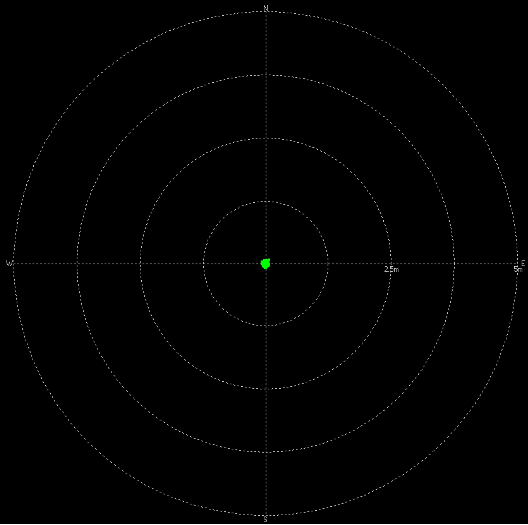
L1/L2 (GPS/Gal/GLO/BDS) + SPARTN
Data Sheet Links
TIMING & GEOLOCATION
GEOLOCATION
Trusted Partners and Customers
Tallysman’s GNSS and Iridium antenna products are trusted by these PNT industry leaders.
